Crypto and DeFi
Cryptocurrency and decentralised finance (DeFi) have revolutionised the financial industry, providing users with more control over their finances and disrupting traditional banking systems. However, with the rise of these technologies comes a host of cyber risks that users and developers must be aware of to protect themselves and their platforms.
Hacking
One of the most significant cyber risks associated with cryptocurrency and DeFi platforms is hacking. These platforms hold significant amounts of funds, making them attractive targets for cybercriminals. If a hacker gains access to a platform’s private keys or a user’s wallet, they can steal funds without the owner’s permission.
There have been several high-profile hacking incidents in the cryptocurrency and DeFi space. For example, in 2014, the Mt. Gox exchange was hacked, resulting in the loss of 850,000 bitcoins. In 2020, the KuCoin exchange was hacked, resulting in the loss of over $280 million in cryptocurrency.
To prevent hacking, platform developers should implement robust security measures such as multi-factor authentication, encryption, and regular security audits. Additionally, users should only use reputable platforms and take steps to protect their wallets, such as using hardware wallets and strong passwords.
Phishing
Phishing attacks are another common cyber risk associated with cryptocurrency and DeFi. In a phishing attack, a hacker creates a fake website or email that appears to be a legitimate platform, tricking users into entering their login credentials or private keys.
Phishing attacks can be challenging to detect because they are designed to look like legitimate platforms or emails. To avoid falling victim to a phishing attack, users should always verify that they are on a legitimate website and only enter their login credentials or private keys on secure platforms.
Platform developers can also implement measures to prevent phishing attacks, such as using two-factor authentication and providing users with clear instructions on how to identify and report phishing attempts.
Smart Contract Vulnerabilities
Smart contracts are self-executing contracts with the terms of the agreement between buyer and seller being directly written into lines of code. They are the backbone of many DeFi platforms, providing users with transparency and security. However, they are also vulnerable to coding errors and exploits.
A single error in a smart contract can lead to significant losses for all parties involved. For example, in 2016, the DAO (Decentralised Autonomous Organisation) was hacked, resulting in the loss of $50 million in cryptocurrency.
To prevent smart contract vulnerabilities, platform developers should conduct extensive testing and auditing to identify and fix any vulnerabilities in their systems. Additionally, they should implement measures to detect and respond to smart contract exploits, such as freeze functions that can stop trading in the event of an exploit.
Malware
Malware is malicious software that can infect a user’s device and steal their private keys or other sensitive information. Malware can be spread through email attachments, downloads, and other sources.
To prevent malware infections, users should use anti-virus software, avoid clicking on suspicious links or downloading unknown files, and only use secure platforms. Platform developers should also implement security measures such as encryption and two-factor authentication to protect users’ data.
Social Engineering
Social engineering involves manipulating people to gain access to sensitive information or funds. For example, a hacker might pose as a customer support representative and convince a user to share their private keys or login credentials.
To prevent social engineering attacks, users should only share sensitive information with trusted individuals and always verify that they are communicating with legitimate customer support representatives. Platform developers should also provide clear instructions to users on how to identify and report social engineering attempts.
Centralisation Risks
Some DeFi platforms are not entirely decentralised, which means they still have centralised points of failure. If these centralised points are compromised, the entire platform may be at risk.
To mitigate centralisation risks, platform developers should work to decentralise their platforms as much as possible. This may involve implementing distributed storage solutions or using multiple validators to increase security.
In conclusion,
While cryptocurrency and DeFi have many advantages, they also come with significant cyber risks. To protect themselves and their platforms, users and developers must be aware of these risks and take steps to mitigate them. By implementing robust security measures and conducting regular audits, developers can help ensure that their platforms remain secure. Similarly, users should take steps to protect their wallets and only use reputable platforms. By working together, we can help create a safe and secure crypto and DeFi ecosystem for everyone.














